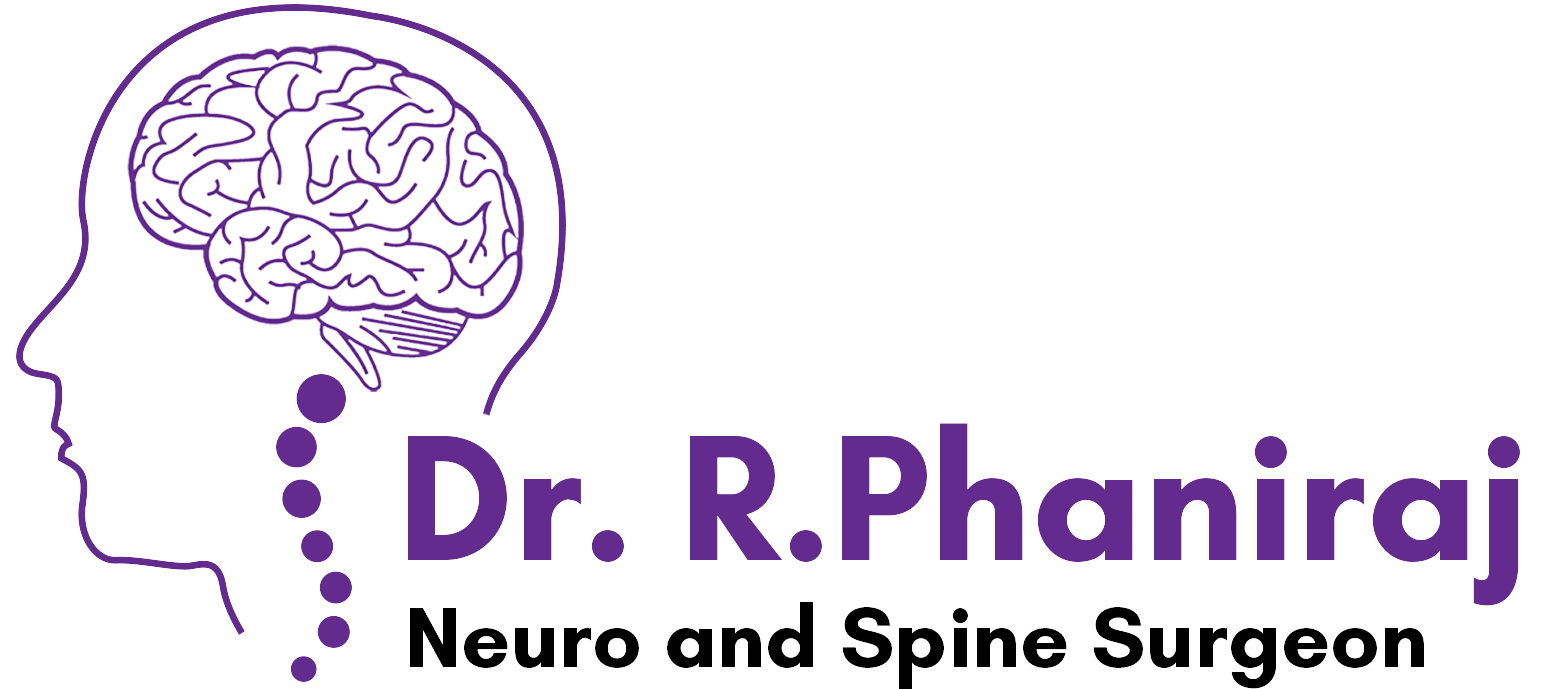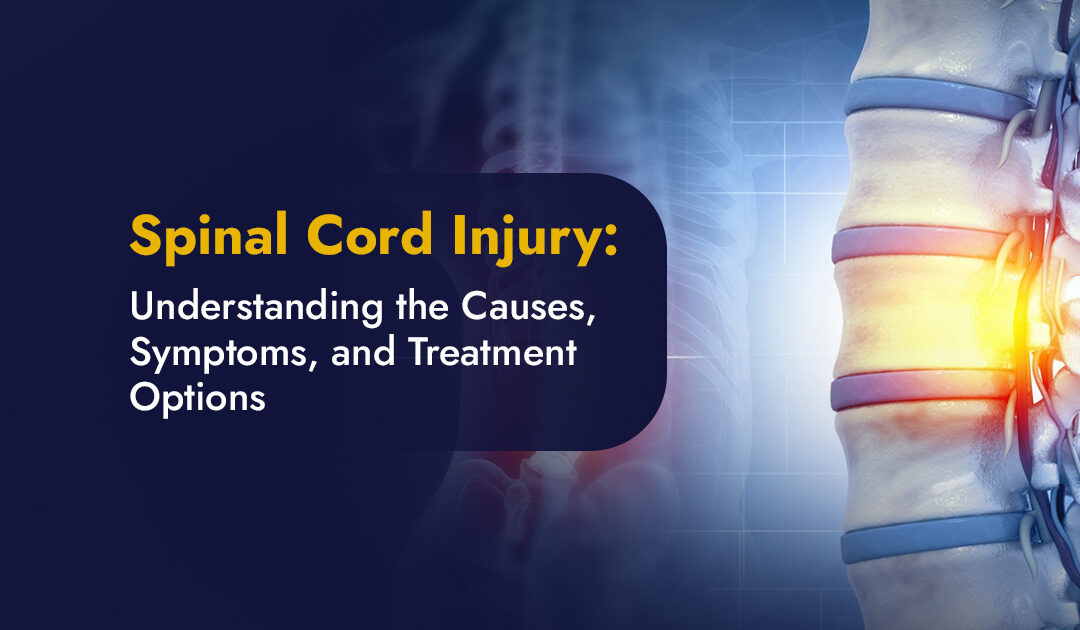Spinal Cord Injuries (SCI) are potentially life-altering events that occur when the spinal cord, the vital communication pathway between the brain and the body, suffers damage. This injury can disrupt the flow of sensory and motor signals, leading to profound changes in an individual’s ability to move, feel, and even control essential bodily functions.
What Are the Functions of a Spinal Cord?
The spinal cord is a long, cylindrical nervous tissue that extends from the brainstem down to the lower back. It is enclosed in the backbone (vertebrae), stacked one over the other from the neck to the back. The spinal cord is the communication pathway between the brain and the rest of the body. Its functions are
- Motor functions: Responsible for the movement of muscles and limbs.
- Sensory functions: Transmission of sensory information like touch, pain, temperature, and proprioception (sense of body position) to the brain
- Autonomic functions: Regulation of important functions like heart rate, blood pressure, digestion, and body temperature.
What Are The Five Main Regions Of The Spine And Their Corresponding Functions?
The vertebral column is made up of 33 vertebrae, which are small bones stacked on top of each other, further divided into five main regions:
- Cervical (Neck)—7 vertebrae (C1 to C7) support the head and allow movement of the neck.
- Thoracic (Upper Back)—12 vertebrae (T1 to T12) attach to the ribs and form the upper and mid-back.
- Lumbar (Lower Back)—5 vertebrae (L1 to L5) are the largest and help support the weight of the body.
- Sacral (Pelvic Area)—5 fused vertebrae (S1 to S5) form part of the pelvis.
- Coccygeal (Tailbone)—4 fused vertebrae make up the small tailbone at the bottom of the spine.
The spinal cord extends up to the lower border of the L1 vertebra, from which various spinal nerves emerge at each vertebral level. Accordingly, the spinal cord is responsible for activities based on its level.
- Cervical (C1-C8): Controls the head, neck, arms, and diaphragm (important for breathing).
- Thoracic (T1-T12): Controls the trunk, chest muscles, and some aspects of breathing.
- Lumbar (L1-L5): Controls the legs and some abdominal muscles.
- Sacral (S1-S5): Controls bowel, bladder, and sexual functions.
What Determines the Extent and Level of a Spinal Cord Injury?
Spinal cord injuries are classified based on the extent of injury and its level.
Extent of Injury:
Complete SCI: When the spinal cord is completely damaged, there is a complete loss of all motor and sensory functions below the level of injury.
Incomplete SCI: In cases of incomplete SCI, some degree of sensory and/or motor function may be preserved depending on the nature of the injury, such as:
Anterior Cord Syndrome: Loss of motor function and pain/temperature sensation, but some touch and proprioception may remain.
Central Cord Syndrome: There may be leg movements but loss of hand functions.
Brown-Séquard Syndrome: There may be paralysis and loss of sensation on one side of the body, while sensation and function remain on the opposite side.
Posterior Cord Syndrome: This syndrome involves loss of only sensation but preserved motor function.
Level of injury:
- Cervical Injuries (C1-C8): Injuries at this level can cause quadriplegia (paralysis of all four limbs). Injuries higher than the C5 level could also lead to complete paralysis and require ventilator support for breathing, while a lower-level injury may allow for some arm and elbow movements with preserved breathing.
- Thoracic Injuries (T1-T12): The injuries over the chest and abdomen levels could lead to paraplegia (paralysis of the lower body). High thoracic injuries (T1-T6) can also affect respiratory function.
- Lumbar/Sacral Injuries (L1-S5): These injuries can affect leg movement and bladder or bowel control, but arm and hand functions remain intact.
What Are The Causes of Spinal Cord Injury?
The causes of spinal cord injuries are classified into traumatic and non-traumatic causes. They include:
Traumatic Causes:
- Road traffic accidents
- Falls
- Sports injuries (especially contact sports like football or diving)
- Violence (gunshot or stab wounds)
- Workplace accidents
Non-Traumatic Causes (Pathological Fractures):
- Infections
- Tumors
- Vascular abnormalities of the cord
- Bone pathologies
How To Manage a Spinal Cord Injury?
The main goal is to stabilize the patient, manage complications, and enhance quality of life through vigorous rehabilitation.
- Emergency management:
- Immobilization: Keep the spine stable with a neck brace or backboard to prevent further injury.
- Breathing support: If needed, assist with breathing, especially for high cervical injuries.
- Surgery: This may be required to stabilize the spine, remove bone fragments, or relieve pressure on the spinal cord.
- Rehabilitation:
- Physical therapy: This is done to improve strength, mobility, and function.
- Occupational therapy: This helps with daily activities (e.g., dressing, eating).
- Psychological support: To cope with the emotional impacts of the injury.
When to Visit a Healthcare Professional?
It is always recommended to immediately seek medical attention if someone has an injury to the neck or head. It is safe to assume a spinal cord injury unless evaluated otherwise, as a severe injury to the spinal cord is not always obvious. The situation might be critical, leading to numbness or paralysis, and may need immediate intervention for quicker recovery.
In case you feel that someone has an injury to the back or neck, do not move them, as they may experience permanent paralysis or other severe complications.
Call an ambulance and make the person stay still. If possible, put heavy towels on both sides of the neck or hold the head and neck to prevent them from moving too much. It is important to note that you are not moving the head or neck of the affected person, as it may have dire consequences.
Consider scheduling an appointment today for more information and assistance on spinal cord injuries.

